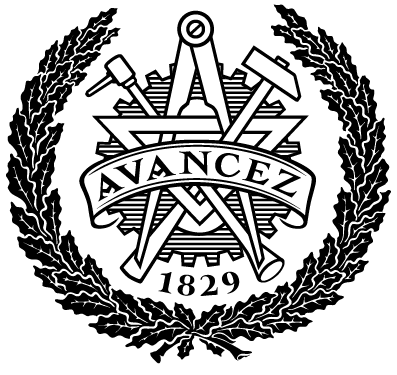Techno-economic feasibility study of an urban rooftop ice rink- Integrating with Rosenlundsverket district energy in central Gothenburg
| dc.contributor.author | Chehrazi, Reza | |
| dc.contributor.department | Chalmers tekniska högskola / Institutionen för arkitektur och samhällsbyggnadsteknik (ACE) | sv |
| dc.contributor.department | Chalmers tekniska högskola / Institutionen för arkitektur och samhällsbyggnadsteknik (ACE) | en |
| dc.contributor.examiner | Dalenbäck, Jan-Olof | |
| dc.contributor.supervisor | Dalenbäck, Jan-Olof | |
| dc.date.accessioned | 2025-10-02T10:47:02Z | |
| dc.date.issued | 2025 | |
| dc.date.submitted | ||
| dc.description.abstract | This master's thesis presents a comprehensive techno-economic feasibility study for implementing an innovative urban rooftop ice rink at Rosenlundsverket in Gothenburg, Sweden. The research addresses the growing need for sustainable recreational infrastructure by evaluating advanced energy system alternatives that integrate with existing district energy networks while minimizing environmental impact. The study focuses on a 1,100 m² recreational ice rink positioned 20 meters above ground level, designed for year-round operation with a design effective cooling load capacity of 762.5 kW, excluding HVAC requirements due to the open roof proposal. The research emphasizes CO₂ transcritical refrigeration technology (R744) as the primary cooling system due to its superior environmental credentials and high efficiency in Nordic climates. Through detailed performance modeling using Danfoss Coolselector®2 professional software and ASPEN Plus® validation, combined with meteorological data from SMHI Säve station, six integration scenarios excluding the reference scenario were systematically evaluated over a 25-year lifecycle. The methodology incorporates comprehensive cooling load calculations adapted for open-roof conditions, considering factors such as solar radiation, convective heat transfer, condensation effects, and wind exposure characteristic of rooftop installations. Advanced design features encompass integrated photovoltaic shading systems utilizing Midsummer BOLD flexible films that cover 65% of the roof area (958 m²), wind barriers that achieve a 70% reduction in wind speed, and rainwater harvesting systems that can decrease municipal water consumption by 60-80%. Findings indicate significant economic and technical viability across all assessed scenarios, with notable outcomes from hybrid system configurations. The COMBO Scenario with Heat Recovery demonstrates significant leadership in transformation, achieving a net present value enhancement of +40.4 million SEK, annual savings of 41.5 million SEK, and an exceptional return on investment of 3,576%. The COMBO Scenario (nominal) demonstrates significant second place performance, yielding an improvement of +30.3 million SEK in NPV and an ROI of 5,411%. The River Cooling integration yields an NPV improvement of +22.8 million SEK without necessitating further capital investment, whereas the Cascade District Cooling scenario presents an NPV improvement of +22.7 million SEK with an ROI of 4,042%. The Combo+ DHW scenario demonstrates significant technical performance, achieving an overall normalized efficiency gain of +88%. Additionally, the Combined DH exhibits a +53.4% improvement in overall normalized efficiency through advanced waste heat recovery, capturing up to 268 kW of thermal energy for district heating applications. Environmental benefits encompass annual energy consumption reductions of 12-18% relative to traditional ice rink designs, with the optimized COMBO scenarios attaining 56-64% of the Swedish national average consumption (1,137 MWh annually). Reductions in greenhouse gas emissions of up to 5.8 tonnes CO2 per year compared to the reference are achieved through the mitigation of off-site emissions from electrical generation and the adoption of natural refrigerants. Additionally, enhanced urban sustainability is realized through the utilization of waste heat in district energy networks, resulting in carbon footprint IV reductions of 26-37% relative to reference systems. The integrated photovoltaic system, with an 11% capacity, facilitates renewable energy generation, while the rainwater harvesting system enhances sustainable water management practices. The study demonstrates that sustainable urban recreational infrastructure can significantly enhance economic performance while benefiting district energy systems. The COMBO scenarios exhibit significant potential, with the heat recovery configuration achieving a 72% reduction in total costs relative to conventional methods, thereby establishing a clear technological advantage in ice rink energy systems. The findings offer a solid technical basis and economic rationale for stakeholders to adopt this innovative rooftop ice rink concept, creating a replicable model for analogous urban development initiatives in Nordic climates. This study provides important insights into sustainable building design, district energy integration, and urban planning practices, illustrating how advanced engineering can yield synergistic benefits for facility operators and urban energy networks while achieving carbon-negative operations and significant economic returns. | |
| dc.identifier.coursecode | ACEX30 | |
| dc.identifier.uri | http://hdl.handle.net/20.500.12380/310570 | |
| dc.language.iso | eng | |
| dc.setspec.uppsok | Technology | |
| dc.subject | Ice rink, CO₂ refrigeration, district energy integration, hybrid systems, techno-economic analysis, Open-roof Ice Rink | |
| dc.title | Techno-economic feasibility study of an urban rooftop ice rink- Integrating with Rosenlundsverket district energy in central Gothenburg | |
| dc.type.degree | Examensarbete för masterexamen | sv |
| dc.type.degree | Master's Thesis | en |
| dc.type.uppsok | H | |
| local.programme | Sustainable energy systems (MPSES), MSc |
